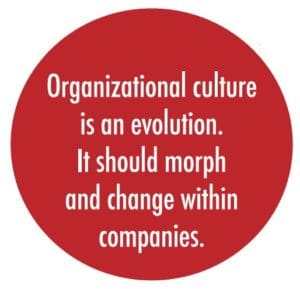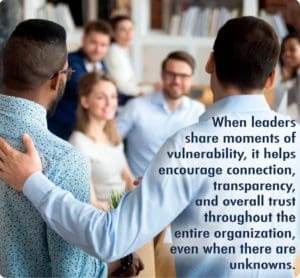Post-crisis culture management requires different ways of thinking, adapting, and working.
By Hema Crockett and Jamie Jacobs
A strong, aligned organizational culture is critical in order for any business to be successful, and it doesn’t happen by accident. It’s defined by the values and behaviors that are demonstrated through everyone’s actions, acting as the heart of the organization. While organizational cultures have been put to the test with the ongoing COVID-19 crisis, it’s important to look at the big picture in the present and plan accordingly for whatever changes may come in the future. Leaders must turn the lens inward and consider the lessons learned during these times where answers are not always available. When leaders understand how to shift accordingly in all areas of both business and personal life, organizations are better prepared to handle another crisis if and when it occurs. This requires new ways of thinking, adapting, and working.
Before the pandemic, daily behaviors, interactions, and processes looked different in the work setting from where they are today. Many organizations followed the “this is the way we’ve always done it, so why change” type of mindset. Additionally, it was day-to day face-to-face interactions that allowed workers to easily connect with peers and colleagues not only from a social perspective, but from a collaborative work environment perspective as well. For example, the office typically came with face-to-face meetings, various greetings in the hallways, whiteboards with project timelines, walls with core values, shaking hands, networking, and being social. Now, most of these interactions happen across a screen. Another major area that was commonly overlooked were contingency plans. Many organizations did not have a solid plan in place for what happens when a crisis, pandemic, major disaster or other people issues might occur. Prior to the COVID-19 crisis, many leaders took for granted the way work was completed, who completed it, when, etc. This all shifted quickly as organizations responded to the pandemic.
While it’s difficult to define what “post crisis” or “after” might look like, especially since it’s still going on, organizations have already begun to adjust in ways that were once unfamiliar. For example, decision-making looks a lot different now, leaders are learning to navigate their teams differently with many working remotely on a full-time basis, and implementation of new technology is at an all-time high. Knowing how quickly things can change, it’s important to recognize the impact a crisis can have on an organization in order to prevent, plan, manage, and recover accordingly. Being prepared ensures employee needs are met while driving business objectives forward. Below are some areas to consider.
1. Stay connected through communication. With companies forced to learn how to communicate more frequently, effectively, and in a remote environment, many recognized they couldn’t rely on the watercooler cascading of information. This has allowed for new cadences of communication at all levels of the organization, especially with the increase in technology. Whether in person or remote or both, HR leaders should develop a plan for new and efficient ways to communicate with team members without having to be face-to-face with one another. This doesn’t mean add more meetings to the calendar. It means finding ways to check-in, pass along information, and stay connected in an efficient and effective. This not only helps company culture stay strong, but it helps people connect back to the larger purpose and organization.
2. Be transparent and vulnerable. It’s a myth that leaders have to know the right answer or have an answer in the first place. If this pandemic has taught leaders anything about communication, it’s that vulnerability is valuable. Even though leaders may not have all of the answers, the personal connection created though vulnerability and transparency goes a long way in developing trust and loyalty. This is important for leaders to remember regardless of whether there is a crisis or not. When leaders share moments of vulnerability, it helps encourage connection, transparency, and overall trust throughout the entire organization, even when there are unknowns.
3. Reinforce core values. When it comes to decision-making, core values can be used as a guide to support the overall vision and keep organizations on track. It’s easy to question the right decision is being made in the middle of a crisis. By using the core values as a guide or anchor, decisions are made in an honest and transparent way, all while staying true to organizational culture. Be sure to review values and actively reinforce them. Post crisis, using these values to guide people decisions is extremely important for organizational strategy and day-to-day actions, and will be the key to rebuilding a high-performing culture.
4. Put people first. Employees are all going through things in their personal lives, away from work. COVID-19 and racial injustice have made it obvious that employees are deeply impacted by factors that occur outside of the office and leaders have witnessed the effects. Increase awareness and sensitivity by encouraging difficult conversations; listening and learning from one another’s experiences; and being present each day. Leaders who tune into this and leverage empathy will leap forward in employee engagement and retention, and employees will bring their discretionary effort every single day. Organizational culture is an evolution. It can morph and change within organizations. But the strength of company culture can help determine how quickly organizations can bounce back from a crisis.















